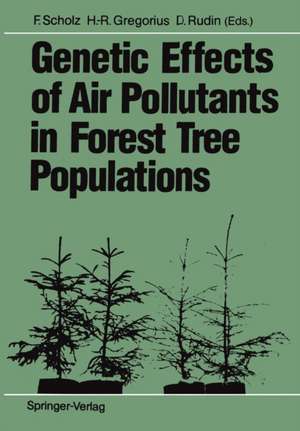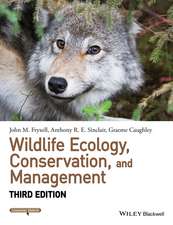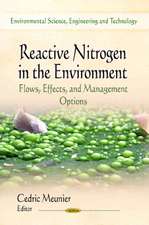Genetic Effects of Air Pollutants in Forest Tree Populations: Proceedings of the Joint Meeting of the IUFRO Working Parties Genetic Aspects of Air Pollution Population and Ecological Genetics Biochemical Genetics held in Großhansdorf, August 3–7, 1987
Editat de Florian Scholz, Hans-Rolf Gregorius, Dag Rudinen Limba Engleză Paperback – 15 ian 2012
Preț: 637.78 lei
Preț vechi: 750.33 lei
-15% Nou
Puncte Express: 957
Preț estimativ în valută:
122.05€ • 127.26$ • 101.44£
122.05€ • 127.26$ • 101.44£
Carte tipărită la comandă
Livrare economică 20 martie-03 aprilie
Preluare comenzi: 021 569.72.76
Specificații
ISBN-13: 9783642745508
ISBN-10: 3642745504
Pagini: 212
Ilustrații: VIII, 201 p.
Dimensiuni: 170 x 244 x 11 mm
Greutate: 0.35 kg
Ediția:Softcover reprint of the original 1st ed. 1989
Editura: Springer Berlin, Heidelberg
Colecția Springer
Locul publicării:Berlin, Heidelberg, Germany
ISBN-10: 3642745504
Pagini: 212
Ilustrații: VIII, 201 p.
Dimensiuni: 170 x 244 x 11 mm
Greutate: 0.35 kg
Ediția:Softcover reprint of the original 1st ed. 1989
Editura: Springer Berlin, Heidelberg
Colecția Springer
Locul publicării:Berlin, Heidelberg, Germany
Public țintă
ResearchDescriere
Air pollutants provide environmental conditions that drastically differ in many respects from those to which forest trees are naturally adapted. Leading experts in the field here consider these questions of immediate relevance arising from the changing environment: (1) Do air pollutants introduce effects of selection that differ from those known for populations that are not subject to such stress conditions? (2) If air pollutants introduce quantitatively or even qualitatively novel selective effects, which consequences might arise from the adaptation of forest tree populations to the present conditions as well as for the preservation of adaptability to future conditions? In addition to these questions, concepts for preservation of genetic resources are discussed.
Cuprins
1: Methods of sampling and genetic analysis.- The attribution of phenotypic variation to genetic or environmental variation in ecological studies.- Isoenzymes, indicators of environmental impacts on plants or environmentally stable gene markers?.- 2: Variation in response to pollutants.- Variation in and natural selection for air pollution tolerances in trees.- Structure and first results of a research program on ecological genetics of air pollution effects in Norway spruce.- Response of Picea abies (L.) Karst. provenances to aluminum in hydroponics.- Variation in needle wax degradation in two silver fir provenances differentiated by tolerance to air pollution.- Natural variation in sensitivity of reproductive processes in some boreal forest trees to acidity.- Effects of air pollutants on reproductive processes of poplar (Populus spp.) and Scots pine (Pinus sylvestris L.).- 3: Selection effects of pollutants.- Genetic studies in populations of Silene cucubalus occurring on various polluted and unpolluted areas.- Studies of Scots pine populations in polluted and clean areas.- Genetic implications of environmental stress in adult forest stands of Fagus sylvatica L..- Selection effects of air pollution in Norway spruce (Picea abies) populations.- 4: Preservation of genetic resources.- The importance of genetic multiplicity for tolerance of atmospheric pollution.- Gene resources and gene conservation in forest trees: General concepts.- Measures for the conservation of forest gene resources in the Federal Republic of Germany.- Implications of genetic effects of air pollution on forest ecosystems — Knowledge gaps —.












